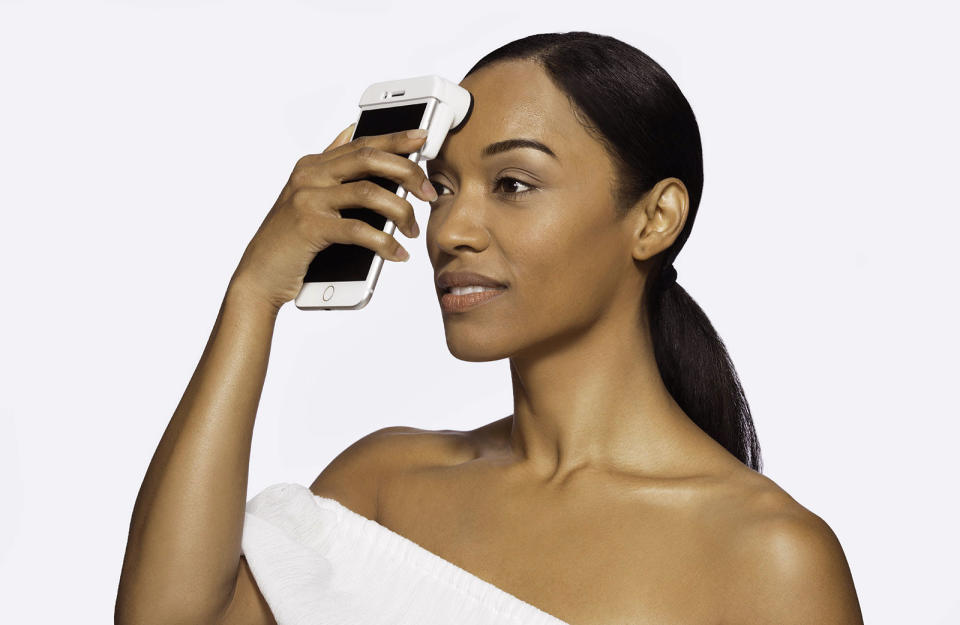Neutrogena's scanner shows your skin in excruciating detail
The AI can judge your pores, fine lines, wrinkles and moisture levels.
Neutrogena has unveiled a device that attaches to your iPhone and can tell you more about your skin issues and convince you to (wait for it) buy more Neutrogena products. The SkinScanner from the Johnson & Johnson-owned company attaches to the top of an iPhone, and takes a magnified image of your skin and measures the moisture content. An AI-enabled app called Skin 360 then analyzes the data and gives your skin a 0 to 100 rating and shows how it's improving over time.
Skin scanners are nothing new, as you can find them in spas and cosmetics stores like Sephora. However, the SkinScanner makes the concept cheaper and more consumer-friendly by sticking it on a smartphone. By doing so, Neutrogena is targeting younger users who are comfortable with tech and don't necessarily buy creams or cosmetics the traditional way.
The device uses 12 LED lights, a 30x magnifier and a moisture detector at the edge of the camera. To use it, you just open up the Skin 360 app, place it directly against your skin and grab some images. The resulting (very) closeup photos show your pores, wrinkles and moisture in (possibly shocking) detail.
From there, the app's built-in AI compares your skin to other folks your age and assigns a maximum score of 100 for the aforementioned categories. Clicking on the "improve" button will, naturally, take you to Neutrogena's store, when you can pick up products to fix your problems.
It's probably not healthy to obsess on your pores and wrinkles, and as we noted with the Way skin sensor, the solution for dry skin is generally to drink more water. And while the tech is kind of cool, as with much of the beauty industry, it seems designed to make you feel bad about yourself so that you'll spend more money. Nevertheless, it's not terribly expensive at $50, so it might be worth a go for some. Neutrogena will be showing it at CES 2018, so we'll try to get, um, a closer look.
Click here to catch up on the latest news from CES 2018.


